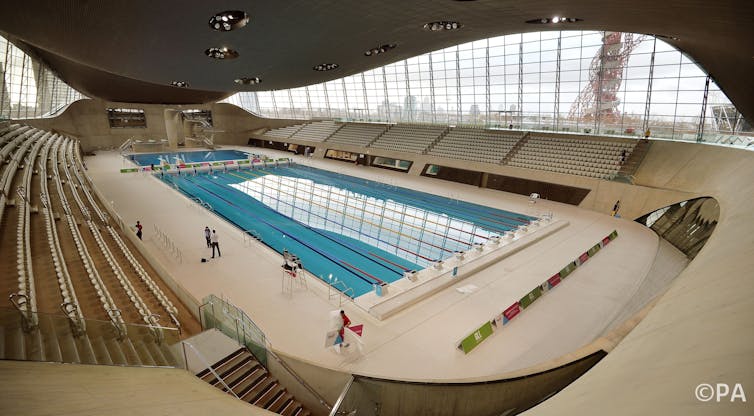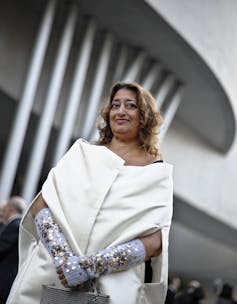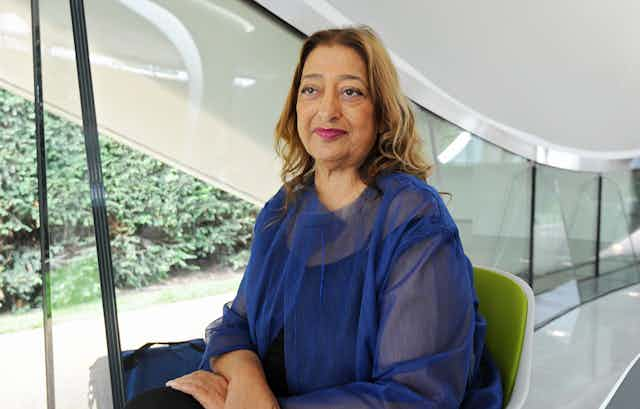For those of us in the design world, the news of Zaha Hadid’s death of a heart attack at age 65 is profound. Her works are known throughout the world; from the London Aquatics Centre, built for the 2012 Olympic Games, to China’s Guangzhou Opera House, to the Heydar Aliyev Centre in Azerbaijan. She has been recognised with some of the highest honours in architecture; she was the first woman to win the Pritzker prize, and the Royal Institute of British Architects (RIBA) gold medal.
I was privileged to have worked for Zaha between 2011 and 2013, as general manager of her practice. In that time, I came to have a greater understanding and appreciation for her and her work. I quickly learned that Zaha was unconventional and exceptional, both as an architect, and as a person.
Of course, many people will know Zaha through her buildings, her writings, her paintings and her wider creative output. Some evaluated her work on its appearance alone, erroneously claiming that her buildings did not fit with their surroundings. And yet after visiting her buildings, people are often left in awe of the spaces she created.

In time, her creative output will be more fully and properly appreciated. The range of her design is extraordinary, from the smallest jewellery pieces through to large architectural projects, some of which are still being built.
The myth

Myths and legends about Zaha pervade among both the architectural community and the general public. Everyone has a view on Zaha – she generates debate and controversy like no other contemporary designer. Students of architecture are curious at the very mention of her name, hungry to know more about her work. I often find myself discussing and defending the work of her office in debates among architects, students and lay people, whose opinions are often polarised.

It is well known that she railed against being called a diva. She wanted to be considered an architect – and not a “female architect”. In truth, she was more than that – as a person, and a professional, she had great presence.
At public events, such as contract signings and building openings, there were times when her arrival was greeted with the enraptured response typically reserved for film stars. Our meetings would often be held in restaurants, and as she walked into the room it would fall silent – almost in reverence.
Often theatrical, sometimes quiet and introspective, Zaha was a complex person who could switch the mood from one of high seriousness to mirth with her biting wit.
She enjoyed provocation and discussion about architecture and place making. She often lamented the lack of intellectual debate in contemporary architecture, and reminisced about her time as a student at the Architectural Association in the early 80s – a time of creativity and questioning.
The legacy
In office meetings, she was able to cut through woolly thinking and would not hesitate to interrupt someone who was digging themselves into a hole. “Get to the point!”, she would bellow. This ensured that before any meeting, staff knew it was vital to be fully prepared and briefed, and to have the answers to all possible questions she might throw at you.
I will miss her texts, and her belief that if it couldn’t be said in five words then it wasn’t worth saying. Succinct and to the point, the text message was invented for Zaha; she would often reply to texts before you had finished writing them.
She demanded, and earned, energy, dedication and loyalty from her staff. She demanded the highest standards in everything; ambivalence and sloppiness were not tolerated.

As with all significant design work, ideas were central to her projects. She often expressed anxiety that the office should continue to produce new ideas and remain as creative leaders. She encouraged her team to come up with and pursue new ideas. And that’s why her firm will be her legacy, just as much as her completed buildings and designs.
Zaha’s design studio is unique, and reflects her own desire to test design ideas. She allowed people to flourish in a creative atmosphere; the studios under Zaha’s “umbrella” had a distinctive attitude, which was more about design exploration than corporate hierarchy.
Although her office will be in great shock, it will undoubtedly survive and continue to experiment and develop outstanding designs; its future work will be the true representation of Zaha’s legacy. Her great presence will endure.

